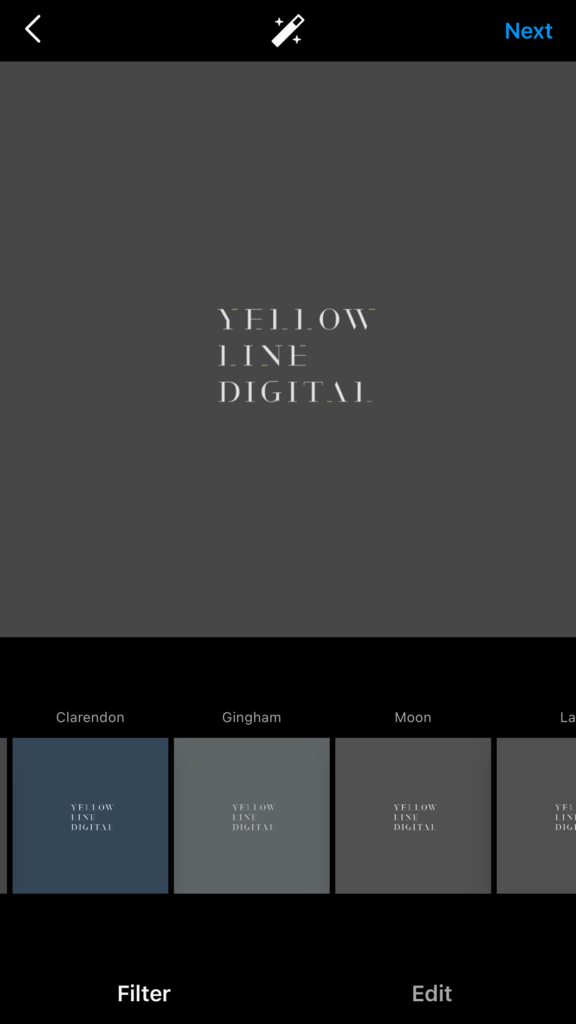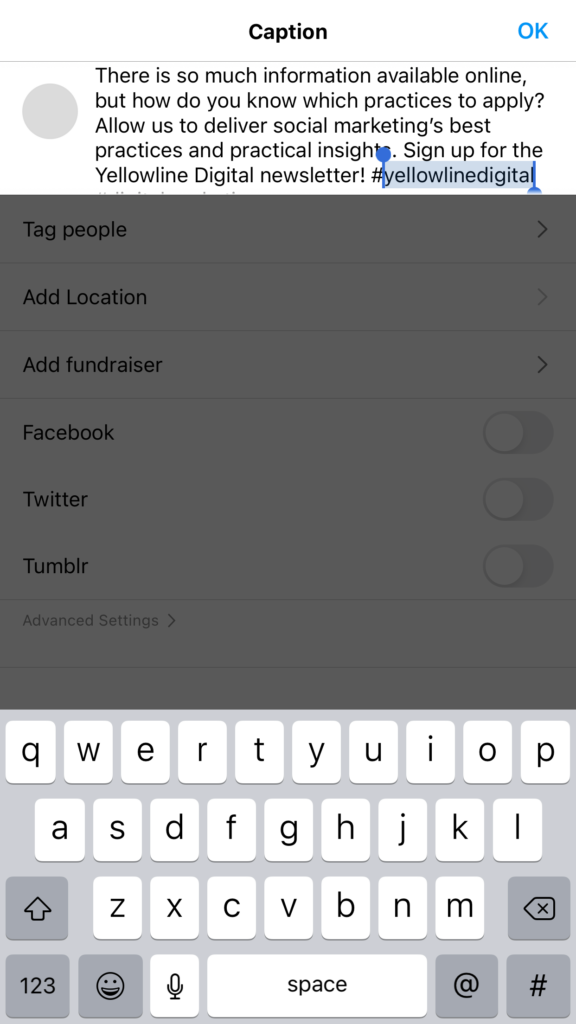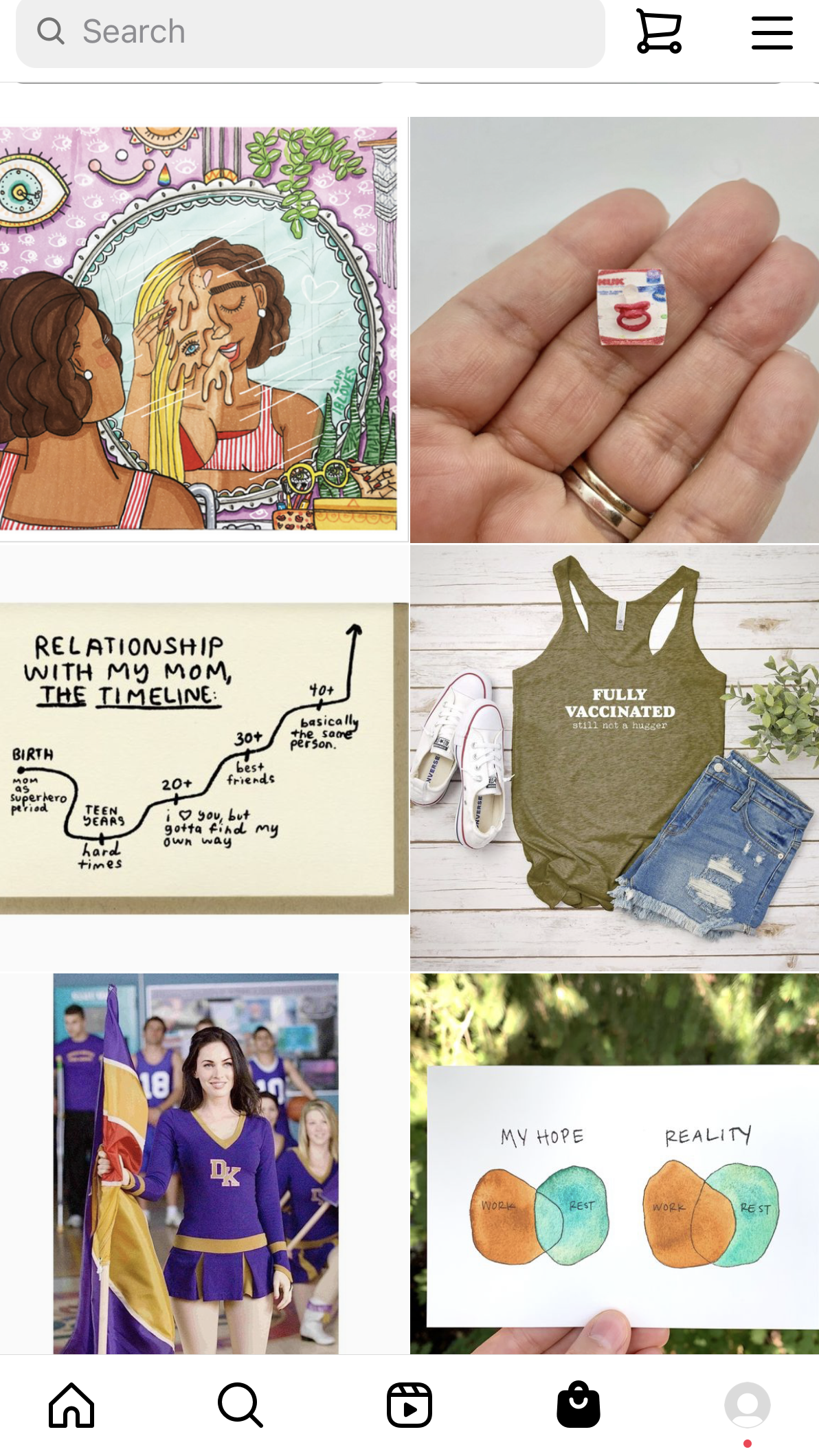Instagram is a platform that has been constantly evolving since it rose to popularity in 2012. It regularly introduces new tools and abilities which boost engagement, increase screen time, and provide a more entertaining experience. However, this can mean it’s difficult to keep up with the app’s best practices. Here at Yellow Line Digital, our research on Instagram then vs. now allow our clients to receive the best possible service and benefit from the latest tactics.
We took a look at Instagram in 2012 vs. 2022 and explored how the best from both eras can help us use the app most effectively.
Feeds


Then: Scrapbook
Now: Curated portfolio
Instagram began as a scrapbook. The feeds were full of spontaneously taken photos with bad filters and stream-of-consciousness captions. The platform was simple and almost child-like. Feeds were colorful, creative, not thought out or planned, done in the moment, with captions full of hashtags and “moods.” Curated grid aesthetics and consistent styles weren’t common when Instagram first started. However, users slowly began to post photos only if they fit their aesthetic. There is a similar trend today, wherein users put the same filter on every photo to maintain a cohesive look on their feed. The colorful, spontaneous photos are mainly left for Stories now.
Feeds should definitely have a cohesive style by using a brand identity kit of fonts and colors to maintain a unified look, but one should also post spontaneously taken photos. Authentic moments are what we love to see on Instagram. If a meaningful photo doesn’t match your chosen aesthetic, turn it into a simple graphic using your company’s brand identity kit.
Filters and Features


Then: Filters and collages
Now: Facetune, filters, gifs, polls, questions, links, stickers, stories, etc.
Photos were overly filtered back in the old days of Instagram, although not filtered in the way we know today. It was more akin to putting four color filters on top of one photo, and then adding that sweet, sweet black gradient around the edge of photos that only the “Lomo-Fi” filter could provide. These were not the days of beauty filters and Facetune. Stickers and fun elements for posts came from external apps, and collages were HUGE.
Instagram now provides us with a lot of filters and features that we need. Of course, many people edit photos on external apps, but one could rely solely on Instagram for the basics. The app now allows us to use interactive stickers that boost engagement and views on your stories. You can add links, polls, questions, etc. The best part is you can review the analytics and tweak your content based on what performs best.
Captions and Hashtags


Then: Stream-of-consciousness and full of random hashtags and emojis
Now: Well-crafted statements with intentional hashtags, a few emojis, and CTAs
Captions should be engaging and well-crafted while maintaining the authenticity of old Instagram captions. We can input relevant emojis throughout the caption, but perhaps not twenty of them.
Short hashtags are definitely more effective and searchable than the old stream-of-consciousness hashtags, although we can apply the authenticity of those hashtags. You can search the number of hashtag uses on Instagram and curate a list of relevant hashtags that have between 8k and 250k uses for optimum chances of being found through hashtags.
Shopping and Marketing


Then: Selling items from posts
Now: Instagram optimizes platform for shopping and video
The main button of the app used to be for posting, which makes sense since it is a photo-sharing app. However, the main button is now for shopping and exploring. This proves that Instagram is not just a photo-sharing app anymore. It is more intentional and business-focused. It is also leaning into video and entertainment after seeing the success of YouTube and TikTok. Sponsored posts and analytics also came onto the scene between 2013 and 2016. The platform has become, in a sense, pay-to-play. Organic following isn’t as easy. Using sponsored posts can get you the kick that you need to gain more likes, engagements, and reach.
Influencers


Then: Mainstream celebrities, popular businesses, meme/niche interest accounts
Now: Anyone can be an influencer, influencers for every topic
With so many profiles and businesses, choices can be overwhelming. Create influencers for your business by just putting a face (or faces) to the company. People become connected to your influencer, and thus are more emotionally invested in your business.
Video


Then: Fun video only on main feed
Now: Video created especially for Instagram on Reels, Stories, and Feed
Video used to be only on feeds, and video wasn’t a main feature of the app. However, Instagram has made a transition to be more video-focused after seeing the success of TikTok. Video now gets some of the best engagement on Instagram. Instagram’s Creator Fund is actually better for the creator than TikTok, another reason why so many creators are making the switch to Reels everyday. Video should definitely be prioritized on Instagram to maintain following and increase engagements.
Algorithm and Chronology


Then: Chronological feed
Now: Algorithm-based feed
Instagram is now testing the chronological feed again, as of January 2022. However, engagement is still needed for the algorithm to push your content, especially if they don’t keep the chronological order. The algorithm-based method forces you to keep working your content towards what your audience responds to and will engage with.
Conclusion
So, now that we understand Instagram then vs. now, what should we take from the old Instagram practices to influence how we use it today? Reinstate some of the original purposes of Instagram — authenticity, fun, sharing, and entertainment. Businesses must reevaluate their uses of Instagram to successfully stay true to their mission and brand. It’s necessary to post meaningful and authentic content while still maintaining an idiosyncratic tone and style. Most importantly, it is necessary to try all of Instagram’s newest features to see what your audience responds to while always maintaining one’s branding and voice.



